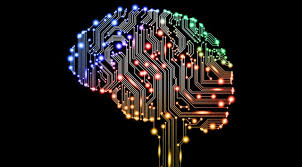Posted by Pranav Kakhandiki, Edited by Anika Asthana| Aug 14, 2018, 6:00:00 PM
AI, which stands for for Artificial Intelligence, is a fascinating new field of technology. A sub-field of AI known as machine learning, can automate mundane processes, which gives us more time to focus on more important tasks. Because AI is so new, however, it is hard to predict any benefits or potential drawbacks it might present.

To properly understand AI’s impact, it is important to understand how it works. It is important to distinguish between the two types of machine learning: supervised and unsupervised. Supervised learning uses input-output pairs to train itself on how to perform a specific task. In other words, supervised learning programs train themselves on data provided by the user. For example, if someone wants to predict the cost of a 1500 square-foot house, we would use other data points relating size and cost. If we know the cost of houses which are 500, 750, and 1000 square feet big, then we can use a technique called linear regression, which draws a best fit line, to estimate the cost of a 1500 square foot house. To calculate how close a program gets to predicting values using linear regression, we use the cost function, defined below:

HØ(x(i)) is the hypothesis function, defined as: Ø1(x)+Ø0, our linear regression model, where Ø1 and Ø0 are the parameters(in this case Ø1 defines the slope of the line, and Ø0 is the y-intercept). y(i) is the actual y value, and m is the total number of (x,y) data-points. Essentially, we are adding the squares of the differences between our hypothesis and the real values, then dividing by the total number of values. The goal of any supervised machine learning program is to minimize the cost function, thus minimizing our overall error in our approximation. The ½ at the beginning is only there to cancel out when the derivative of the cost function is taken, and provides no purpose other than convenience of calculation.
Unsupervised learning trains a machine without data. But how can any machine learning program predict the size of a house with no other data to estimate with? Unsupervised learning doesn’t predict or approximate with numbers, but rather is used for clustering data. For example, an unsupervised learning program could be able to group articles based on similarity and topic. Artificial Intelligence robots use one or both of these techniques to complete a given task. Semi-supervised learning is the middle ground between the two tactics.

Now that we know the basics of how a simple machine learning algorithm works, we can address its benefits and drawbacks. AI could shape product manufacturing, increasing efficiency and throughput in production. Moreover, AI frees up humans to do what robots can’t do: be creative. Automating simple processes allows employees to think about how they can improve products instead of sorting through spreadsheets. There are truly endless options with how far AI can go, ranging from automatizing simple tasks like grading tests to performing complex procedures like surgeries. It can even be used to create bots that are similar to humans. Although efficiency and product production can be improved through Artificial Intelligence, there are drawbacks to automating simple tasks, such as the jobs of industry workers. Automating minimum-wage jobs can possibly harm the economy, as it takes crucial sources of income away from a population afflicted with poverty. Though more job positions will open up at AI companies, the total number of jobs might decrease, possibly harming the economy.
Progress in machine learning has experienced a massive boom in the last few years. Companies are scrambling to create the next bot and automating tasks to make our lives more convenient. Al can also be used in the medical field, assisting doctors diagnose patients. Almost all technologies, however, come with both positive and negative effects. With so much power vested in AI, it’s our responsibility as a human race to decide what we do with it.


Very nice introduction to AI and its impact
LikeLiked by 3 people
Great article
LikeLiked by 1 person
Thank you!
LikeLiked by 1 person
Excellent explanation…looking forward for next post..
LikeLiked by 1 person
Thanks! I post about once/month.
LikeLiked by 2 people
Very good 😁
LikeLiked by 1 person
Basic points lucidly brought out.
LikeLiked by 2 people
Thanks!
LikeLike